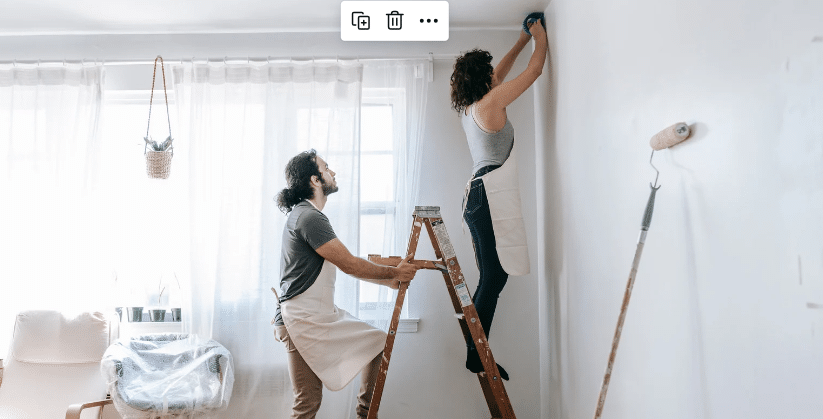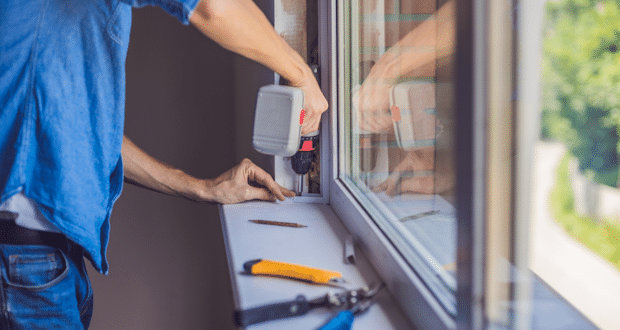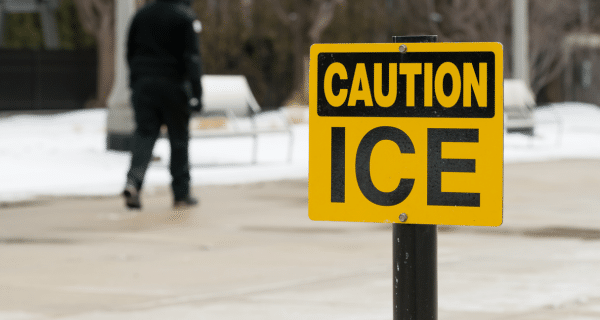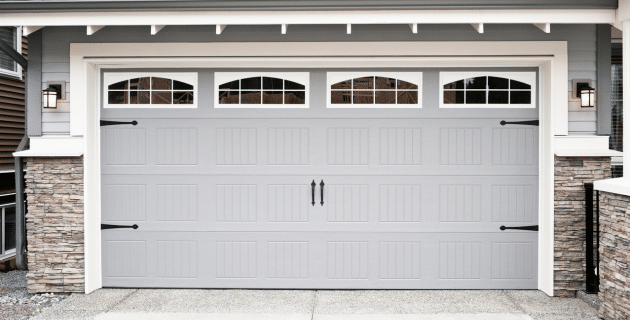
by California Casualty | Helpful Tips, Homeowners Insurance Info |
Understanding the difference between your home warranty and home insurance can save you from financial headaches when things go wrong at home. Let’s break down these two types of coverage to help you make informed decisions about protecting your property.
The Difference At-A-Glance
- Home warranties cover repairs and replacements for certain systems and appliances in your home.
- Home insurance covers property damage to your home, other structures, or belongings in the case of unexpected events like fires, hail, wind, vandalism, or theft.
Both come with limits on what they cover. Read on to find out more.
What You Need to Know About Home Warranties
The name, home warranty, can lead you to believe that this protection covers your home. That’s not exactly the case. Home warranties cover the major appliances and systems in your house.
- When you might purchase a home warranty
Home warranties are generally offered when you purchase a new appliance or system. Examples include washers, dryers, refrigerators, ovens, dishwashers, and garage door openers. You also may have a home warranty for electrical, plumbing, heating, and cooling systems. In case one of these “big ticket” purchases malfunctions, you can avoid a major out-of-pocket expense. The home warranty kicks in after the manufacturer’s warranty expires.
You can also buy a home warranty at any time directly from a home warranty company. Sometimes home warranties are offered as part of real estate transactions as an incentive to close the deal. Such warranties offer peace of mind for the future homeowner.
- What your home warranty covers
Home warranties usually cover service, repair, and replacement of a product for a covered problem and everyday wear and tear.
- What your home warranty doesn’t cover
Your policy might deny coverage if you have not been keeping up with maintenance. They also could deny coverage for improper installation or modifications, pest damage, or pre-existing conditions. Check your warranty policy for the details of what may be excluded from coverage.
You file a claim. The warranty company connects you with an approved contractor to perform the repair. A technician visits your home to diagnose the appliance or the system, and to recommend a repair or replacement. There may be a service fee associated with this visit. If the repair is simple, the technician can do it the same day. If a replacement is needed or a part must be ordered, then a follow-up appointment is scheduled.
- When seeking a home warranty, be an informed consumer:
- Take an inventory of your large home appliances and systems. Write down their age and condition. Record the last time they were serviced.
- Estimate how much it will cost you to replace those systems. If you can afford to replace them without help, you do not need a home warranty.
- Consider a home inspection. This will document any pre-existing conditions that will not be covered by a warranty.
- Research coverages and payment amounts. Read the fine print. Many companies limit the amount that they will pay, and it may only be a portion of the appliance or system.
- Check that the company you choose is in good standing with the Better Business Bureau.
What You Need to Know About Home Insurance
A homeowner’s policy is a “package” of coverages. It protects your home and personal property from specific events that can damage them and provides additional living expenses if you are unable to live there due to an insured loss. In addition, your homeowner’s policy covers you for lawsuits or liability claims that might otherwise be your responsibility if you accidentally injure other people or damage their property.
- When you might purchase home insurance:
You will purchase home insurance when you buy your home. If you have a home mortgage, then maintaining homeowner’s insurance is generally a requirement of your loan agreement. Even if you own your home outright, it’s recommended that you protect your equity in the home by maintaining homeowner’s insurance.
- What your home insurance covers and doesn’t cover:
Following are highlights of what your home insurance policy covers and doesn’t cover. For details on these and other coverages, see our blog on Home Insurance 101.
-
- Dwelling coverage refers to the structure of your home: the roof, walls, floorboards, cabinets, and bath fixtures. A loss is covered unless it’s excluded by your policy.
- Other structures insurance covers pools, fences, gazebos, sheds, etc. A loss is covered unless it’s excluded by your policy.
- Personal property coverage protects your possessions, such as furniture, clothes, sports equipment, and other personal items. If your possessions are stolen, or damaged by fire/smoke or any of 16 covered “perils,” your policy will pay for them subject to your deductible.
- If your home is damaged in a covered loss, it may not be livable. If that’s the case, you would need to stay somewhere else. Loss of Use, also called Additional Living Expense, covers you for any necessary increase in living expenses, such as lodging, food, and gas.
- Personal Liability protects you if a claim is made or a suit brought against you for bodily injury or property damage caused by an occurrence to which coverage applies. Liability covers you at your place or anywhere in the world.
- If you are not liable, but your guest was injured through his/her own fault, then Coverage F – Medical Payment to Others may cover your guest’s medical bills.
- How coverage works:
You file a claim. You’ll fill out the necessary paperwork online or by email. For a homeowner’s or personal property claim, you will need to provide a Proof of Loss statement. That’s a list of items that were damaged or stolen and how much it costs to replace them. You may have to get a repair estimate and include that information. Then, you’ll wait for approval. Once the repair is authorized, you’ll be able proceed. Either you or the contractor will receive payment from the insurance company, so check with your adjuster. You will be responsible for the deductible amount, the amount that you will pay out-of-pocket before insurance kicks in.
- When seeking home insurance, be an informed consumer:
Estimate how much it would cost to rebuild your home from scratch in your current location. Also ballpark the cost to replace all your personal property. This will give you a starting point as to how much insurance you will need.
Determine if you will need specialized coverage beyond a standard homeowner’s policy. For example, you may want flood or earthquake coverage for your location.
-
-
- Shop around for insurance, and keep in mind, that it usually pays to buy home and auto coverage from the same company. When you bundle your home and auto insurance, you can often qualify for reduced rates, saving hundreds of dollars.
- Ask about discounts. You may qualify for insurance discounts for being part of a professional association, such as groups for teachers, nurses or first responders. There are also discounts for being retired, for paying via automatic bank payments, and for paying in full upfront.
- Check that the insurance company you choose is in good standing with the Better Business Bureau.
This article is furnished by California Casualty, providing auto and home insurance to educators, law enforcement officers, firefighters, and nurses. Get a quote at 1.866.704.8614 or www.calcas.com.

by California Casualty | Helpful Tips, Homeowners Insurance Info, Safety |
A home safe is a fortress for your prized possessions and a sanctuary for your peace of mind. In an unpredictable world, a safe might be exactly what you need to protect your valuables. How do you know if one is right for you, and which one do you need? Read on.
Reasons to buy a home safe:
There are many reasons why people buy home safes. These include:
Types of Safes
The reasons that you want a home safe will determine the type of safe that you need. Safes are specially designed with certain features, depending upon their use. Note that you can get safes that combine features such as a burglary safe that is also a fireproof safe. Here are some of the most common types:
Burglary Safe
This type of safe protects your cash and other valuables from being stolen. While no safe is 100% secure, a burglary safe is designed with sturdy material that can withstand attacks by hammers and cutting instruments. Burglary safes are often classified based on the tools and techniques required to break into them. Common burglary ratings include:
- Residential Security Container (RSC): Suitable for residential use, providing basic protection against burglaries.
- TL (Tool Resistant): Indicates resistance against common hand tools like hammers, chisels, and drills.
- TRTL (Torch and Tool Resistant): Resistant to torches and more advanced tools.
- TXTL (Explosive and Tool Resistant): Provides high-level protection against explosives and advanced tools.
Data Safe
A data safe is used to store electronic data such as hard drives, USB sticks, DVDs, film, tapes, and more. These products can be damaged by heat, humidity, dust, and electric/static charges. Not all safes will protect computer media and data. A data safe uses specially insulated material to keep the inner part cooler than traditional safes.
Fireproof Safe
This type of safe protects its contents from heat, fire, and smoke damage. Fireproof safes usually have a thin metal exterior, a middle core made of flame-retardant material, and an inner layer of felt or carpet. However, since the metal on a fireproof safe is typically thin, it can be easily punctured or cut with simple tools. Fireproof safes are tested to see how long they can maintain a certain internal temperature without damaging the contents. Common ratings include:
- 30-minute
- 60-minute
- 90-minute
- 2-hour
- 3-hour
Floor Safe
A floor safe is embedded in the floor, usually in the concrete foundation. Floor safes are great for concealing valuables. They protect well against burglaries and fire. However, in the event of a fire, floor safes often fill with water so you will want to include any contents in waterproof containers. Floor safes also can be expensive and messy to install. You need to install them in a concrete foundation which means the location might be inconvenient.
Gun Safe
A gun safe is ideal for guns and ammunition. These safes can be small enough to fit in a nightstand drawer or larger depending on how many weapons you must store. Many people keep them easily accessible but out of view, so guns are safely tucked away from children, guests, and importantly criminals. Look for a gun safe with a minimum of a 1-hour fireproof rating, a secure locking mechanism, and half-inch or thicker steel.
Jewelry Safe
While you might keep your necklaces, earrings, and bracelets in a jewelry box, you might consider a jewelry safe for higher worth items. After all, jewelry is an easy “grab and go” option for thieves and it’s relatively easy for them to resell precious gems and gold. Jewelry safes often include fabric-lined drawers for organizing your collection. You’ll want to have a burglary safe and fireproof version to keep jewelry from being damaged in the event of a fire.
Wall Safe
These safes are installed in your wall and can be concealed. They’re usually mounted between support beams. You’re limited by size and weight. You don’t want the wall safe to stick out into another wall; nor do you want it too heavy to be held up when attached to drywall and wood studs. While wall safes may be placed in convenient locations, they are less secure than a safe bolted to the floor. A wall safe can be cut out of the wall.
Waterproof Safe
A waterproof safe keeps its contents dry even when the safe is fully submerged in water. While no safe is truly waterproof, there are different water protection ratings. Look for ETL water protection ratings that identify the timing and depth, such as up to 8 inches deep for 24 hours or fully submerged for up to 72 hours. Waterproof safes can help in cases of extreme weather.
Types of Locks
When you buy a safe, not only do you have to consider the body, but the lock that secures it. Following are the different kinds of locks available.
- Key – If you have the key that fits the lock, you gain access. Certain key locks allow you to change keys for times when keys are lost, stolen or if you think they’ve been duplicated.
- Mechanical Combination – Similar to a combination lock that you may have had on your locker or to secure your bike, a mechanical combination lock relies on a dial or wheel that you spin in a certain sequence. The combination locks for safes can have as many as 1 million code variations, and the four-wheel variety can have 100 million code combinations.
- Digital Combination – These combination locks use a keypad rather than a dial to enter your numbers. Codes may be changed as necessary. Digital combination locks rely on batteries, so make sure yours are up to date.
- Dual – A dual key and combination lock gives you the option to use either method to open your safe.
- Biometric – These locks work by scanning your fingerprint, palm print, face, or eye. There’s no need to remember a code or carry a key. They can be set up to store more than one user’s credentials to allow access to several people.
Safes come in many sizes.
You will usually see measurements in cubic feet. To find the interior size of a safe in cubic feet, multiply its height, width, and depth, then divide by 1728. For instance, if a safe is 20” x 15” x 20”, its interior is approximately 3.47 cubic feet. It’s wise to select a slightly larger safe than you initially think you need, as your storage needs may grow over time.
Whether or not you decide to purchase a safe, you can take steps to prevent a burglary. Finally, protect the things inside your home with personal property coverage. This will help ensure your valuables are fully covered.
This article is furnished by California Casualty, providing auto and home insurance to educators, law enforcement officers, firefighters, and nurses. Get a quote at 1.866.704.8614 or www.calcas.com.

by California Casualty | Helpful Tips, Homeowners Insurance Info |
Your home is your canvas, even if you’re just renting. With a little creativity and some renter-friendly tricks up your sleeve, you can plan a room makeover that reflects your personal style—all while keeping your security deposit intact. Here are some of our favorite remodel/redecorating hacks for renters.
Peel-and-Stick Wallpaper: Transform those white walls into a style statement. It’s easy to do with peel-and-stick wallpaper. This type of wallpaper doesn’t require glue, and it’s easy to peel off when you’re ready to move out. Not only can you update your place with trendy patterns and colors, but you can also find removable decals with inspirational quotes.
Temporary Backsplash: An easy way to spruce up your kitchen or bathroom is with a temporary backsplash. Like peel-and-stick wallpaper, these options are easy to install and remove. However, if you’re putting up a backsplash near your stove, make sure to use one that is rated for long-term heat exposure. Thoroughly clean and dry your wall before applying for best results. To remove, apply heat with a hair dryer before peeling it off.
Peel-and-Stick Floor Tile: Give your floor a makeover with peel-and-stick tiles. You can apply adhesive tiles right over the current floor. Note that these tiles are not stickers. They’re thick and rigid and must be cut to size. In addition, they take some work to remove. Research the removal process before you commit. It involves adhesive remover, putty knives, a pry bar, and pliers.
Cabinet Hardware: Upgrading the hardware on your cabinets is an easy way to modernize your kitchen or bathroom. Replace the cheap brass with some matte black pulls for an elegant look or find one that’s uniquely you. Just keep the old hardware so you can replace it when you move.
Light Switch Plates: Chances are your light switch plates are old, faded, and ho-hum. Change them to bright white for a fresh look. Or take them to the next level and decoupage them with your favorite print. Again, keep the original plates to replace when you leave.
Decorative Lighting: Swap out those basic builder-grade light fixtures for something with pizzazz! Choose trendy pendant lights or chic table lamps to illuminate your space in style. Battery operated wall sconces are easy to install and they provide a cozy feel. Just remember to keep the original fixtures stored safely so you can reinstall them before you move out.
Colorful Curtains: Don’t underestimate the power of curtains to elevate your space! Choose bold colors and designs to add drama and personality to your room. They’re easy to install and can be taken down and rehung in your next place.
Furniture Makeovers: Don’t be afraid to get creative with your furniture! Add a fresh coat of paint to a drab dresser, swap out hardware for something more stylish, or cover an old sofa with a colorful throw blanket. These simple updates can breathe new life into your space without causing any damage.
Decorative Room Divider: Freestanding room dividers not only separate and define spaces but they can add to your décor. Use them as a display to hang accessories or art. Just make sure the items are lightweight and non-breakable should they get tossed when the divider is moved about.
Large Mirror: Lean a large mirror against the wall to create a spacious, airy feel and make your apartment seem immediately bigger. By leaning it, rather than attaching it to the wall, there are no holes to fill.
Window Film: If you don’t have window curtains or shades, try a patterned window film. It sticks to the window with just static cling or water and provides privacy without blocking the light. Plus, the pattern adds style to your space. Then, when you’re ready to move out, simply peel it off.
Showerhead: Chances are you have a standard showerhead. Replace it with a larger one to create a spa-like experience. Because showerheads just screw off and on, it’s easy to do. Just keep the original so that you can reattach it when you leave.
Paint: If your landlord allows it, paint is one of the easiest ways to renovate your space. It has an immediate impact, and it’s relatively easy to DIY. Since you will have to restore the original color when you move, consider painting a single statement wall.
Balcony Upgrade: If you have a balcony or porch, there are so many ways to create an inviting space. See our blog on easy apartment balcony upgrades.
Finally, protect your belongings with renter’s insurance. It is surprisingly affordable. For as little as $10 a month, you can get a renter’s policy at California Casualty.
This article is furnished by California Casualty, providing auto and home insurance to educators, law enforcement officers, firefighters, and nurses. Get a quote at 1.866.704.8614 or www.calcas.com.

by California Casualty | Helpful Tips, Homeowners Insurance Info |
We love light-filled rooms and beautiful views. But inevitably, our windows will let us down. They will stick, they will leak, and they will let in unwanted drafts. Whether to replace or repair them, that is the question.
Types of Windows and Frames
Knowing the type of windows is the first step. That will help you to understand what to look for in terms of repairs and replacements.
- Awning windows are horizontal top-hinge windows that swing outward.
- Bay windows have 3 panels at an angle that create an alcove.
- Bow windows have 4-6 panels and are like bay windows.
- Casement windows are hinged at the side and crank to the outside.
- Single slider windows slide horizontally in one direction.
- Double slider windows slide horizontally to either the left or right.
- Single hung windows have the top sash fixed in place, with a bottom that slides up and down.
- Double hung windows have both the top and bottom that slide up and down.
Window Wellness Check
An annual window inspection is a good idea to flag problems before they become expensive repairs or replacements. Schedule a time each year, such as when you replace your smoke detectors, to do a window checkup.
- Check that your window opens and closes easily, and that your window locks.
- Check the weatherstripping to make sure it’s intact and even all around.
- Open the window a quarter of an inch or so. Make sure the opening is even across the bottom of the window.
- Inspect panes for cracks and signs of moisture.
- Check screens for rips or holes.
- Check for signs of mold or mildew.
- Aluminum windows: Check corner welds and exterior caulking. Make sure opening mechanisms are well lubricated.
- Wood windows: Check the caulking on the exterior between the siding and the window frame. That’s where potential problems can arise. Regularly paint and seal the exterior finish and interior finishes.
- Vinyl windows: Check exterior caulking and opening mechanisms.
Common Problems and What to Do About Them
Following are some common problems that you may encounter with your windows—and some guidance on whether to repair or replace.
Windows are meant to be open, and when that doesn’t happen, it can be frustrating. If your window doesn’t open easily or at all, consider the following.
Repair: Some wooden windows are painted over so many times that they don’t open. Other times, dirt, dust, and pollen get lodged in the tracks. You can try removing the debris or paint and lubricating the tracks.
Replace: Aluminum windows that have broken corner welds are nearing the end of their lifespans. Similarly, steel frames that have deteriorated due to rust need to be replaced.
Leaking
As windows age, your seals and caulk can dry out, leaving gaps. This can lead to water leaks when it rains.
Repair: Go around your window and reseal any cracks with caulk and weatherstripping. Almost all windows have bottom “weep” holes where water can drain out. Do not caulk over these holes. Otherwise, water can be trapped in there, freeze, expand and crack the window frame.
Replace: In some cases, windows can be defective and need to be replaced. In addition, if the leak has occurred for some time, the water may have caused the wood frame to rot.
Drafts
If it’s cold outside, you don’t want to feel it through drafty windows. Check that you don’t have any openings and where you can, add extra protection.
Repair: Apply weatherstripping to your windows. Reglaze loose panes.
Replace: You can replace single pane windows with double pane windows that do a better job of blocking the heat of direct sunlight and still let the light come in.
Condensation
Foggy windows could be a sign of expensive repairs to come so you’ll want to address this problem right away.
Repair: Condensation could be due to lack of ventilation. It can soak into the window trim and damage it. It can also lead to mold. You can try a dehumidifier with the windows closed to see if that eliminates the fog.
Replace: Fogging between double pane glass panels cannot be fixed and must be replaced. See the section on soft wood if the water has gotten into the wood.
Sagging Casement
Casement windows can be heavy, and the hardware must be strong enough to hold up over time.
Repair: You may notice the downward movement of the window sash on casement windows. You’ll need to reset the windows and replace the hardware.
Replace: While you can replace worn out crank mechanisms, you’ll need to replace them if they are bent or worn.
Soft or Rotted Wood
You may notice dampness and a darker color on the wood around your window. That could mean it’s structurally unsound.
Repair: When wood is soft to the touch, it is a sign of rot. Flashing protects the window frame from moisture, so make sure yours is not damaged or missing.
Replace: When water leaks into the walls, it can cause a more significant problem. It can attract carpenter ants, termites, and bugs. It can also affect your walls and foundation. Replace any rotted wood right away and eliminate the source of the moisture.
What You Need to Know About New Windows
New windows can boost your energy efficiency and help you save on heating and cooling bills. They can reduce exterior noise, increase security, and improve the look and value of your home.
However, new windows can cost $450-$1,400 per window or more. That means it’s expensive to replace all of them at one time. Also, even if you find a close match, new windows will look different. Consider replacing just a few on the same side. Ask about warranties. You will want protection that cover glass replacement up to 20 years.
Finally, your home is one of your greatest investments. Protect it with the right insurance for added peace of mind.
This article is furnished by California Casualty, providing auto and home insurance to educators, law enforcement officers, firefighters, and nurses. Get a quote at 1.866.704.8614 or www.calcas.com.

by California Casualty | Helpful Tips, Homeowners Insurance Info, Safety |
It’s the Houdini of winter, the slippery vanishing act that turns a simple stroll into a slip-and-fall. We’re talking about black ice, that invisible coating that has us spinning out of control on the roadways. When it appears on our driveways and sidewalks, pedestrians beware.
Not only don’t you want to slip on black ice, you also don’t want to injure someone on your property. That might lead to legal problems. It is your responsibility as a homeowner to keep your property safe.
Read on to find out how to remove black ice from your driveway and sidewalk.
What exactly is black ice?
Black ice is a thin, almost transparent layer of ice on the surface of a roadway, driveway, deck, or other surface. It forms when a surface is wet and then temperatures drop below freezing. What makes it so dangerous is that it’s hard to see. It blends in with the surface and you don’t realize that it’s there until you’re slipping and sliding on it.
If you’re looking for black ice, there are some telltale signs. Sometimes you can notice a glossy or shiny appearance. However, if an area looks dry while surrounding areas are wet or have snow, there could be black ice present. Whether or not you see it, there are steps you can take to remove it, and even prevent it from forming.
Ways to Remove and Prevent Black Ice
Put on protective gear.
To keep yourself from slipping and sliding, you will want sturdy boots with good traction. Water resistant winter gloves will help protect your hands. When spreading chemicals, you also will want to wear safety glasses to shield your eyes. Remember that stairs leading down from your house could be especially slippery and covered in black ice. Use handrails.
Clear the snow and ice.
Shoveling the snow and breaking up the ice will help prevent it from melting and reforming as black ice. Use a snow shovel and ice pick. Finish off with a broom with stiff bristles to sweep away the loose ice. Toss snow and ice away from driveways and walkways. Make sure that when the snow and ice melt, they won’t run back onto the driveway and sidewalk.
Pro Tip: Sometimes you cannot smash the ice or shovel it away. In those cases, use a spade to scratch the surface in several places. This will make the black ice visible to others.
Salt, sand, or de-ice.
You want to prevent slipping, and you can do that by creating traction with sand or sawdust. Alternately, you can use an ice melting product. Use a spreader or bucket to spread these products. Note that salt and chemicals can be harmful to pets, plants, and young children. They also can damage your surfaces and the environment, so use them carefully.
- Rock salt lowers the freezing point of water, causing ice to melt. Spread a thin, even layer of salt. Allow it to penetrate and melt the ice. Use a shovel or broom to remove any ice and salt residue.
- Sand provides traction. While it doesn’t melt the ice, it creates a gritty surface. Spread generous amount of sand, gravel, kitty litter, or sawdust. Leave it in place until ice melts naturally. After the temperatures warm and ice is no longer a danger, be prepared to clean up the mess that results.
- De-icers (deicers) are chemical compounds. They come in many forms including liquids, pellets, and granules. Choose ones that are pet safe; even if you don’t have a pet, chances are your neighbors do. Sprinkle or spread the deicer evenly. Remove any remaining ice with a shovel or broom.
Use heated mats.
While heated driveways aren’t an option for many of us, we can use the more affordable alternative: snow-melting mats. These heated mats are made of slip resistant, waterproof rubber with a built-in heating system. If you turn on the mats before the snowfall, your walkways could stay dry and clear. They make larger ones for driveway use that cars can drive on. Snow melting mats aren’t cheap, but they are less expensive than installing radiant heat under your driveway and sidewalk.
Try rubberized stair treads or tarps.
Rubberized stair treads provide a high traction surface for your shoes, so it’s less likely that you will slip. You also may try a winter weather tarp to cover the surfaces that would typically get ice and snow. They are like a carpet for your driveway. You put them down before a snowfall and lift them up afterward.
Unblock drains and gutters.
Blocked drains can cause water to build up and surfaces to ice over. Clogged gutters also can divert water to places where it shouldn’t go, such as driveways. Make sure that these areas are clear ahead of storms.
Finally, protect your home and property with the right insurance for added peace of mind. After all, it’s one of your greatest investments.
This article is furnished by California Casualty, providing auto and home insurance to educators, law enforcement officers, firefighters, and nurses. Get a quote at 1.866.704.8614 or www.calcas.com.

by California Casualty | Homeowners Insurance Info, Safety |
It’s relatively easy to break into a garage. Thieves can do it in a matter of seconds, and grab your tools, sports equipment, and other high-value items before you know it. Fortunately, you can take steps to protect your garage from a break-in. Follow these tips to make your garage door more secure.
Tip #1: Light the way.
Thieves lurk in the shadows. Add motion-activated flood lights around your garage. The sudden blaze of light is sure to startle a burglar and could scare him away. It also could alert neighbors or passersby to their activity, which could deter them as well.
Tip #2: Cover your windows.
You probably store high-value items in your garage, including your vehicle. Don’t broadcast that fact to everyone. Use interior curtains or blinds to cover your windows. You also can use an adhesive window film. Windows also are easy to break. Consider garage door windows with panes that are too small to use to enter.
Tip #3: Trim your landscaping.
Make sure there are no bushes near your garage where thieves can hide. You want your neighbors and every passerby to be able to see what’s going on. Pro Tip: Plant thorny shrubs under garage windows to discourage thieves from getting in that way.
Tip #4: Reinforce your service door.
If your garage has a service door that leads to the outside or inside of your home, make sure it’s secure. Most garage service doors can be broken with a well-placed, solid kick. Reinforce your door with a strike plate, using 3-inch screws to secure it.
Tip #5: Add a layer of protection with a lock.
Many garages use keyless locks which open the door with a keypad, fingerprint reader, or remote control. Alternatively, you can use a deadbolt or padlock, which require keys. You can even use a combination of locks, such as a garage door lock bar which stops the door from being raised, in combination with another type of lock for added security. Choose the one(s) that works for your budget and your needs. Pro Tip: Keep the keypad clean. A thief can look at the dirty keys to guess your garage door code.
Tip #6: Update your remotes.
If your garage door remote is old, chances are it is easy to hack. Thieves can use a code grabber that copies your signal. Then they can send it to your garage door to open it. Newer remotes use a rolling code, which slightly changes the signal that your remote sends every time. That’s a good reason to update your garage remotes to a newer model.
Tip #7: Don’t clip your garage remote to your car visor.
It’s like giving thieves a key to your home. They can just break into your car to get your remote. Consider using a smart garage door opener from your smartphone or attach your remote to your keychain so it’s always with you.
Tip #8: Close your garage door.
It may seem simple but sometimes we forget to close our garage doors. Don’t tempt thieves by leaving yours open. Consider an automatic door closer that will shut the door after a specified amount of time. You also may wish to invest in a garage door monitor, which displays whether the garage door is open or closed.
Tip #9: Protect your garage’s emergency release cord.
The emergency release cord is designed to open the garage door in a power outage. Thieves however use it to their advantage. They can push the door inward to create enough of a gap to insert a wire hook. Then they pull down on the cord. There are a few ways that you can protect the cord from this hack. You can pull the cord through a PVC pipe that is too thick and bulky to be pulled by the wire. You can cut the cord very short so thieves cannot easily grab it. You can zip tie it so it cannot be pulled. You can create a door lock shield with a scrap of plywood screwed to the opener’s arm.
Tip #10: Install a security camera.
Security cameras can help deter thieves, especially if they are visible. Make sure that the ones you buy are designed for outdoor use and specifically for the seasonal temperatures in your region. Consider features like motion-activated recording, and WiFi or mobile access via your smartphone or other device. Add a door alarm or security sensor to alert you of a breach. This is especially valuable if you are not home or are on vacation.
Finally, for added peace of mind, you will want to make sure that you fully protect your home with the right coverage. After all, your home is one of your greatest investments.
This article is furnished by California Casualty, providing auto and home insurance to educators, law enforcement officers, firefighters, and nurses. Get a quote at 1.866.704.8614 or www.calcas.com.






